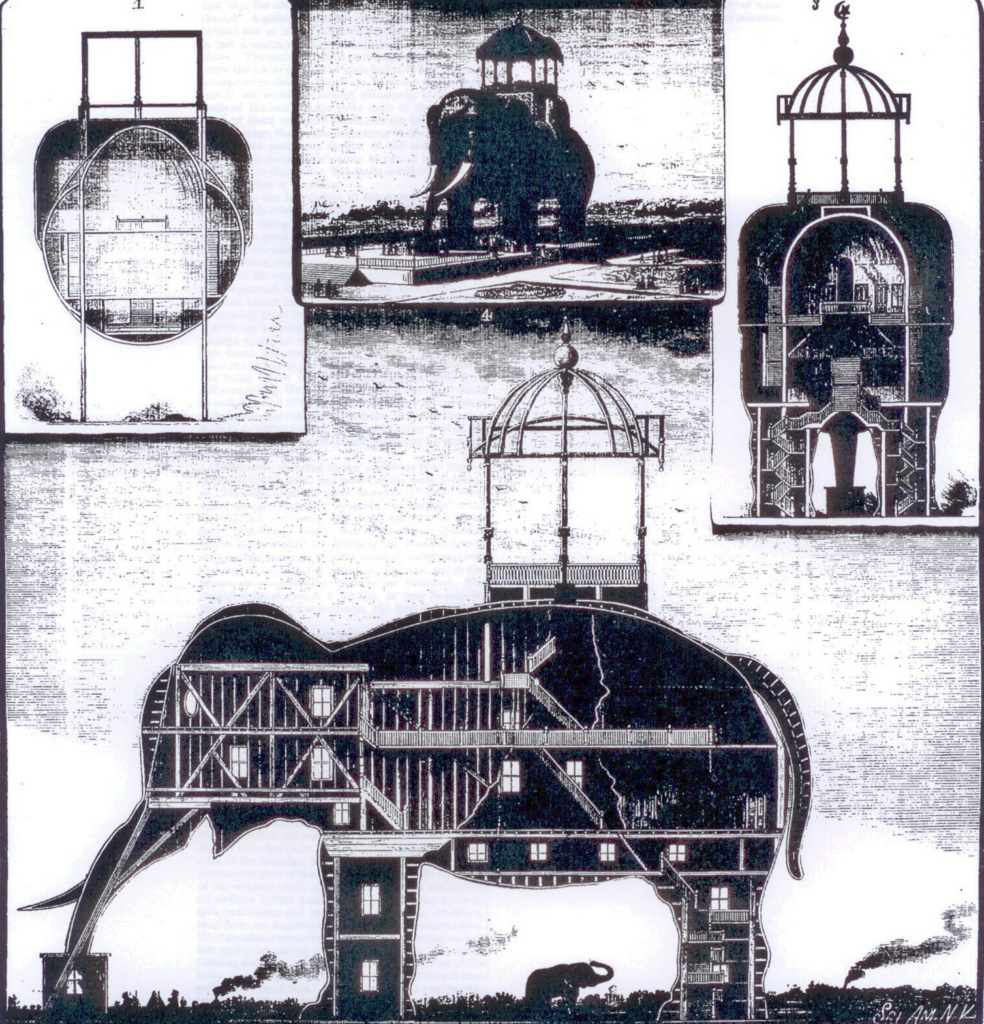Thursday, June 27, 2024 – TWO COLOSSUS ELEPHANTS, ONE STILL STANDING


OLD STRUCTURES
ENGINEERING
DON FRIEDMAN
Ephemeral Elephant
Coney Island
ISSUE # 1262
I mentioned the Colossus of Coney Island once before, but it’s time to expand on that a bit. (The fact that I mentioned this building three and a half years ago and did not remember having done so until I searched for it makes me wonder if I’ve written too many blog posts.) Here’s an 1896 photograph that, while sadly lacking contrast, gives an accurate impression of how big that elephant was. The one-story building in front only goes halfway up the legs.

Note that visiting the inside was free at that time. It had been planned as a mall of sorts, housing individual store stalls and supposedly had a grand hall and museum. While it was extraordinarily large as an elephant, it was not really that big as a building, and the museum and hall spaces were small as museums and grand halls go. And since the number of windows – again, large for an elephant, small for a building – was limited by the need to have the wood structure span between the legs, it must have been a bit dark and close inside there. Here’s a cross-section

It was about twice the size of its predecessor, Lucy, in Atlantic City, with the peak of the howdah on the elephant’s back about 120 feet above grade. My personal favorite detail is that there were telescopes set into the eyes – which may be why they look a little weird in the photos – so that the head was a kind of observatory. Another not-great photo:

The Colossus opened in 1885 and, like so much of early Coney Island, burned down. The stereoscopic view may be dated 1897, but the elephant burned down in September 1896.

A Coney Island Tragedy: Burning of the Historic Elephant
Cover from October 10, 1896 issue of The Illustrated American
The attractions at Coney Island and other beach resorts at that time were maybe one notch better than those of a traveling carnival and were built as cheaply as possible. A building-sized object made up entirely of plank and 2×s, and lit by gas, was pretty much inevitably going to burn.
Lucy the Elephant is a six-story elephant-shaped example of novelty architecture, constructed of wood and clad in tin in 1882 by James V. Lafferty in Margate City, New Jersey, approximately five miles (8 km) south of Atlantic City. Originally named Elephant Bazaar, Lucy was built to promote real estate sales and attract tourists. Today, Lucy is the oldest surviving roadside tourist attraction in America.[4]
CREDITS
OLD STRUCTURES ENGINEERING
DON FRIEDMAN
WIKIPEDIA
All image are copyrighted (c) Roosevelt Island Historical Society unless otherwise indicated
THIS PUBLICATION FUNDED BY DISCRETIONARY FUNDS FROM CITY COUNCIL MEMBER JULIE MENIN & ROOSEVELT ISLAND OPERATING CORPORATION PUBLIC PURPOSE FUNDS.


Copyright © 2024 Roosevelt Island Historical Society, All rights reserved.Our mailing address is:
rooseveltislandhistory@gmail.com

Leave a comment